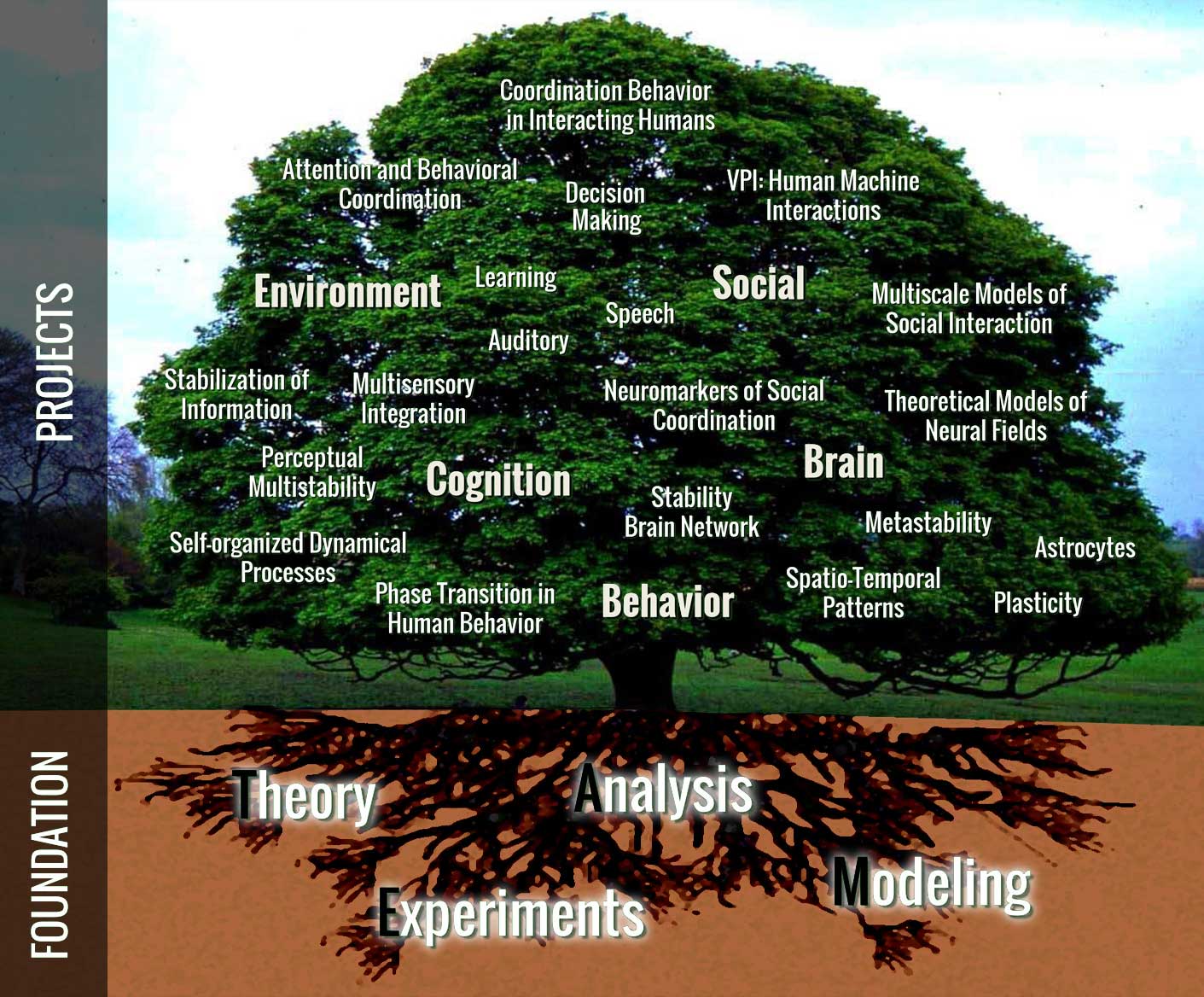
The human brain is a complex system, possessing more than a trillion cells many of which have more than a thousand connections. Out of this enormous complexity, patterns of cognition, emotion and behavior somehow emerge. What laws, principles and mechanisms make this possible? How does the human brain really work? What is its relation to what people do? What happens when the brain does not work, as in the many brain disorders that afflict our society? How do human brains work together?
These are the burning questions that drive research in the Human Brain and Behavior Laboratory (HBBL). Using new concepts, strategies and methods for investigating complex systems and the latest technologies for imaging the human brain, our dedicated team of researchers at HBBL is unraveling the secrets of how the human brain works and its relationship to mind and behavior. In the last 25 years at FAU we have already accomplished a lot, and are poised to achieve much more.”
– J. A. Scott Kelso

In coordination dynamics, the real-life coordination of neurons in the brain and the real-life coordinated actions of animals are cut, fundamentally, from the same dynamic cloth. Integrity is in turn preserved because it is never threatened. Psychophysical unity is undergirded at all levels by coordination dynamics.”
– Maxine Sheets-Johnstone (2004)
The hypothesis that guides our research is that it is the coordination among specialized regions of the brain that underlies human emotions and our ability to attend, perceive, think, learn, remember, decide and act. What is the nature of this coordination and how is it to be understood? To answer this question experimental data are garnered at several levels of complexity and a theoretical framework directs experimental research. We use the latest non-invasive brain imaging technologies (EEG, MEG, fMRI, PET, etc) and sophisticated behavioral analysis tools to gather information about the structure and function of the brain during real-time behavior. Our main thesis is that brain, mind, and behavior are linked by virtue of sharing a common underlying coordination dynamics. Coordination dynamics seeks the laws, principles, and mechanisms underlying the coordinated behavior of different kinds of components at multiple levels of description (molecules, cells, circuits, etc). It is an overarching conceptual framework that describes, explains and predicts how patterns of coordination form and change at multiple levels of brain and behavior. New research at HBBL is showing how the same principles of coordination dynamics apply also to human brains working together in social settings.
The integration of neurophysiological and anatomical facts regarding the coupling among neural ensembles for various behavioral functions sets the stage on which non-invasive brain imaging, theory, experiment, modeling, and data analysis can play out—a true TEAM approach (Theory, Experiment, Analysis, and Modeling). The framework of coordination dynamics allows for the development of a theoretical model of human brain function and behavior that operates at multiple levels of description. Laws of behavioral coordination have already been connected to laws of pattern generation at the level of neuronal ensembles. Ongoing projects pursue this multiscale approach across neural, behavioral and social levels.